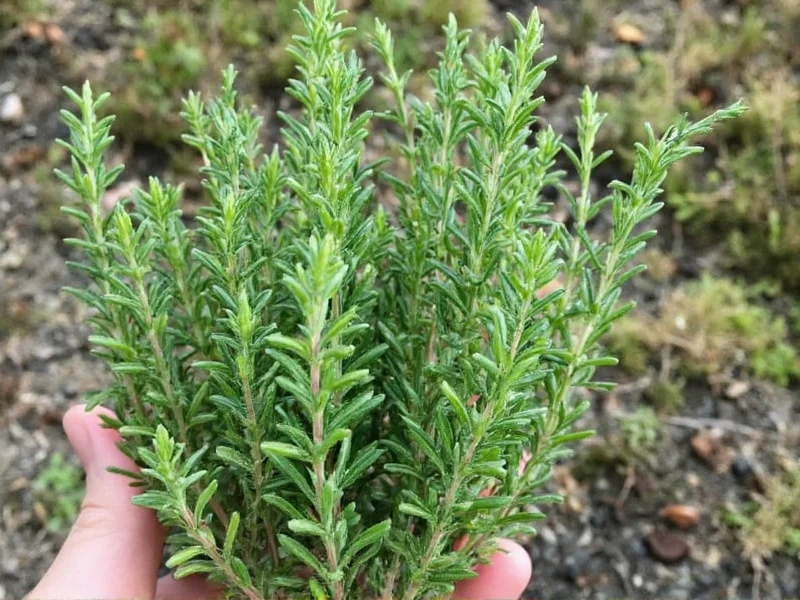Thyme is a hardy perennial herb that rewards careful harvesting with continuous growth and maximum flavor. Whether you're growing common thyme, lemon thyme, or other varieties, proper harvesting techniques ensure your plants remain productive throughout the growing season. Many gardeners make the mistake of harvesting too aggressively or at the wrong time, which can compromise both plant health and flavor quality.
Optimal Timing for Thyme Harvesting
The best time to harvest thyme depends on both the time of day and the plant's growth stage. Morning harvesting provides the highest essential oil concentration as the plant recovers from night moisture. Wait until after the dew evaporates but before 10 a.m. to avoid wilted stems from midday heat.
Seasonally, begin harvesting when your thyme plant reaches 6-8 inches in height and shows flower buds forming. This typically occurs in late spring or early summer for established plants. The pre-flowering stage delivers the most intense flavor profile as the plant concentrates its essential oils.
Essential Tools for Harvesting Thyme
Proper tools make thyme harvesting efficient and plant-friendly:
| Tool | Purpose | Alternative |
|---|---|---|
| Sharp bypass pruners | Clean cuts without crushing stems | Small kitchen scissors |
| Garden gloves | Protection from woody stems | N/A |
| Cleaning cloth | Wipe tools between cuts | Paper towel |
| Harvest basket | Air circulation for cuttings | Cloth bag |
Disinfect your cutting tools with rubbing alcohol before harvesting to prevent disease transmission between plants. Dull tools crush rather than cut stems, creating entry points for pathogens and slowing the plant's recovery.
Step-by-Step Thyme Harvesting Process
Follow these steps for successful thyme harvesting that promotes plant health:
- Identify healthy stems with vibrant green color and no signs of disease
- Locate the harvesting point 4-6 inches from stem tips, above leaf nodes
- Position pruners at a 45-degree angle for optimal healing
- Cut cleanly just above a leaf node to encourage branching
- Limit harvest to one-third of the plant's total growth
- Rotate harvesting directions to maintain balanced plant shape
- Collect cuttings in a shaded container to prevent wilting
This harvesting technique for beginners ensures your thyme plants continue producing throughout the season. The proper way to harvest thyme plants involves strategic cutting that stimulates new growth points rather than damaging the plant's structure.
Harvesting Frequency and Quantity Guidelines
Understanding how much thyme to harvest at one time prevents plant stress. Never remove more than 30% of the plant's total foliage during a single harvesting session. For container-grown thyme, reduce this to 20% to account for limited root space.
Establish a harvesting schedule based on growth rate:
- Spring growth: Harvest every 3-4 weeks
- Summer peak: Harvest every 2-3 weeks
- Fall growth: Harvest every 4-5 weeks
- Winter: Minimal harvesting in mild climates
Watch for signs your thyme needs harvesting: stems becoming leggy, lower leaves yellowing, or reduced new growth. Regular harvesting prevents woody stems and maintains plant vigor. The thyme pruning and harvesting schedule should adapt to your specific climate and growing conditions.
Post-Harvest Plant Care
After harvesting thyme, provide proper aftercare to ensure quick recovery:
- Water lightly at the base (avoiding wet foliage)
- Apply balanced organic fertilizer two weeks after harvesting
- Monitor for pests that target stressed plants
- Remove any damaged or broken stems
Thyme responds well to harvesting when given proper aftercare. Within 10-14 days, you should notice new growth emerging from the cut nodes. This regrowth period represents the ideal time for your next harvesting session if the plant has sufficiently recovered.
Storing and Using Freshly Harvested Thyme
Maximize your harvest with proper storage techniques:
- Refrigeration: Place stems in a glass with water (like flowers) and cover loosely with a plastic bag for up to 2 weeks
- Drying: Bundle stems and hang upside down in a dark, well-ventilated space for 1-2 weeks until brittle
- Freezing: Chop leaves and freeze in ice cube trays with olive oil or water
- Immediate use: Rinse gently and pat dry before adding to recipes
When harvesting thyme for drying, the optimal time comes just before full bloom when oil concentration peaks. The best time to harvest thyme for drying specifically is during morning hours when essential oils are most concentrated. Properly dried thyme retains 80-90% of its flavor compounds compared to fresh.
Common Thyme Harvesting Mistakes to Avoid
Even experienced gardeners sometimes make these harvesting errors:
- Over-harvesting: Taking more than one-third of the plant stresses the root system
- Midday harvesting: Heat causes rapid moisture loss and flavor degradation
- Cutting too low: Removing growth below the leaf nodes prevents new sprouting
- Using dull tools: Crushed stems invite disease and slow healing
- Harvesting during wet conditions: Increases disease transmission risk
Learning how to cut thyme without damaging plant structure ensures longevity of your herb garden. The most successful thyme growers follow a consistent harvesting rhythm that respects the plant's natural growth cycles.
Seasonal Harvesting Considerations
Adjust your harvesting approach based on seasonal changes:
- Spring: First harvest should be light (20% maximum) to establish strong growth
- Summer: Peak harvesting season with most frequent cuts (every 2-3 weeks)
- Fall: Final substantial harvest 4-6 weeks before first frost
- Winter: In mild climates, occasional light harvesting of new growth
Understanding thyme harvesting techniques for beginners includes recognizing how seasons affect plant physiology. Late summer harvests often yield the most aromatic thyme as the plant concentrates oils before cooler weather.











 浙公网安备
33010002000092号
浙公网安备
33010002000092号 浙B2-20120091-4
浙B2-20120091-4